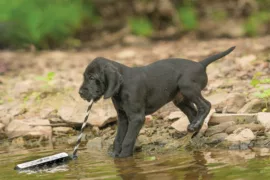From our July/August 2025 Issue
Exmoor, in the southwest of England, is like few other places in the country. It is a landscape sculpted by wind and water rather than by the ice sheet that smoothed the roughness of the rest of the country. As a result, it has retained an edge to its rugged beauty, and it is that landscape of moor and valley that gives us some of the best pheasant and partridge shooting in the world.
Six of the best shoots sit like stars in a sporting firmament:
Combe Sydenham, Challacombe, Haddeo, Molland, Milton and Stuckeridge. They are all under one house, Loyton Sporting, which takes great pains to blend a traditional family atmosphere with seamless hospitality. If you’ve ever had the pleasure of staying with a friend who seems to have thought of everything you could need, you have some idea of the level at which Loyton is operating—and that starts before you even think of firing a shot.
In early October I join a team of Guns organized by Dave Cruz of Country Pursuits & Outfitters at Loyton Lodge—the eponymous heart of the operation located just north of Tiverton. As I discover in conversation with host Angus Barnes, this is one of four options for accommodations that Loyton offers teams of visiting Guns. None are lacking in refined comfort in any way.
I am immediately made welcome by the staff at the lodge and am ushered into a cocktail party where, accompanied by a perfect dry martini, I enjoy a conversation in front of the fire about classic English shotguns. This is hardly surprising, as Dave is formerly of Holland & Holland and now sells fine guns of all descriptions and organizes hunting trips and Angus is the former head of Bonhams auction house's sporting-gun department. It has all the refinement of a London club with none of the idiotic rules. The guests arrive as they would to a house party, and the relaxed atmosphere sets the tone for the three days to follow. This is neither accidental nor obviously contrived—it is the hallmark of perfect hospitality.
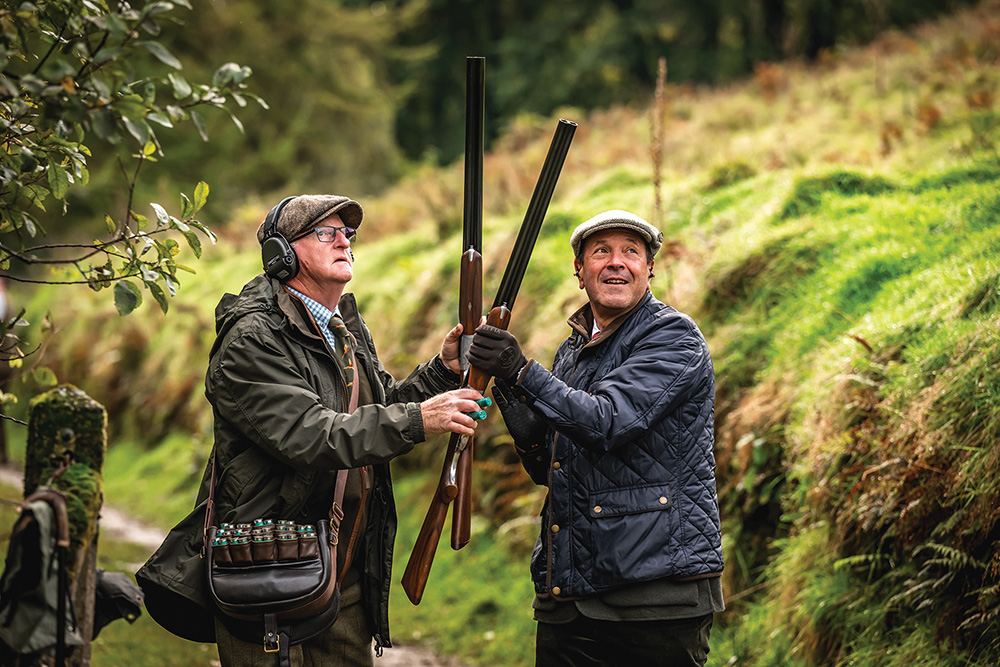
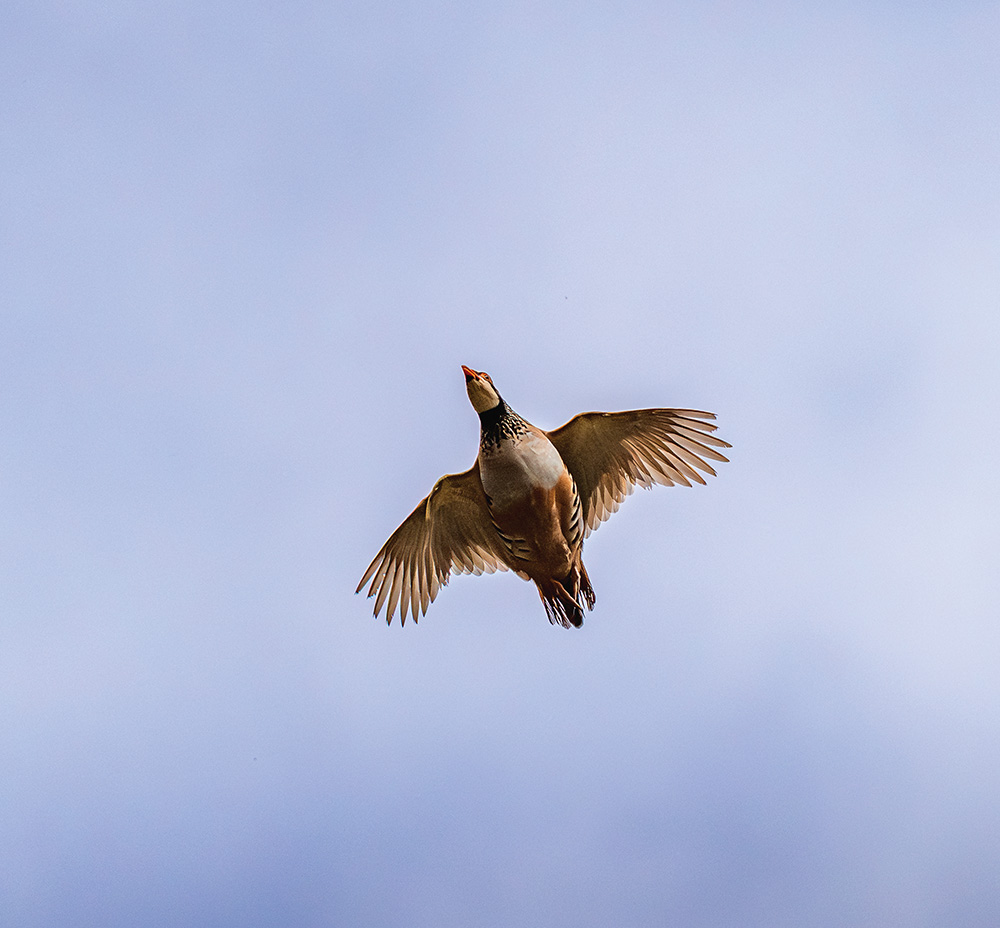
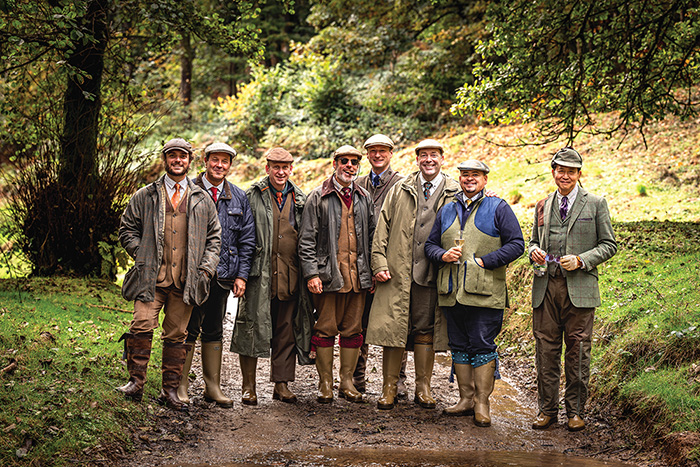
The next morning, well-rested and strengthened by the perfect breakfast, I am ready for the first day of shooting. Loaded into vehicles, we wind our way through the narrow Exmoor lanes toward Combe Sydenham for a day of driven pheasants. This estate has a family history that includes Sir Francis Drake, a global explorer and favorite of Queen Elizabeth I. Drake's second wife was the daughter of George Sydenham, and Drake's water-engineering skills can still be seen as we drive into the shoot. The ponds are part of a system he designed to power a sawmill that has been part of this working landscape for centuries.
Upon arrival, we meet Head Keeper Pete Conachie. Pete has the relaxed style that comes from more than 20 years of providing highest-quality game shooting to clients from all over the world. He has a warm manner and kindly face that immediately put everyone at ease. It’s clear from the outset that the needs of any visiting team of Guns can be accommodated.
I watch as the team suits up and draws pegs, and it's obvious there is a “can do” atmosphere from Pete and his team. This is later confirmed by Simon rood, formerly of James Purdey & Sons, in London, who works with each head keeper to ensure that guests have the best possible experience. “If a guest has some mobility issues, for example,” Simon says, “we can drop what might be too awkward a drive for them and go to another.” And it‘s all achieved without so much as a furrowed brow.
The first drive is “Beech Hangar.” Pheasants in the mixed deciduous woodland are pushed toward rising ground in front of us that has palisades of mature beech trees in defensive posture. Some look precarious, giving the drive its name, but they encourage the pheasants higher over the Guns as the birds come forward in the dogged rain. It is a classic drive in the old tradition—picturesque in front of the guns and producing fine pheasants steadily for a half-hour.
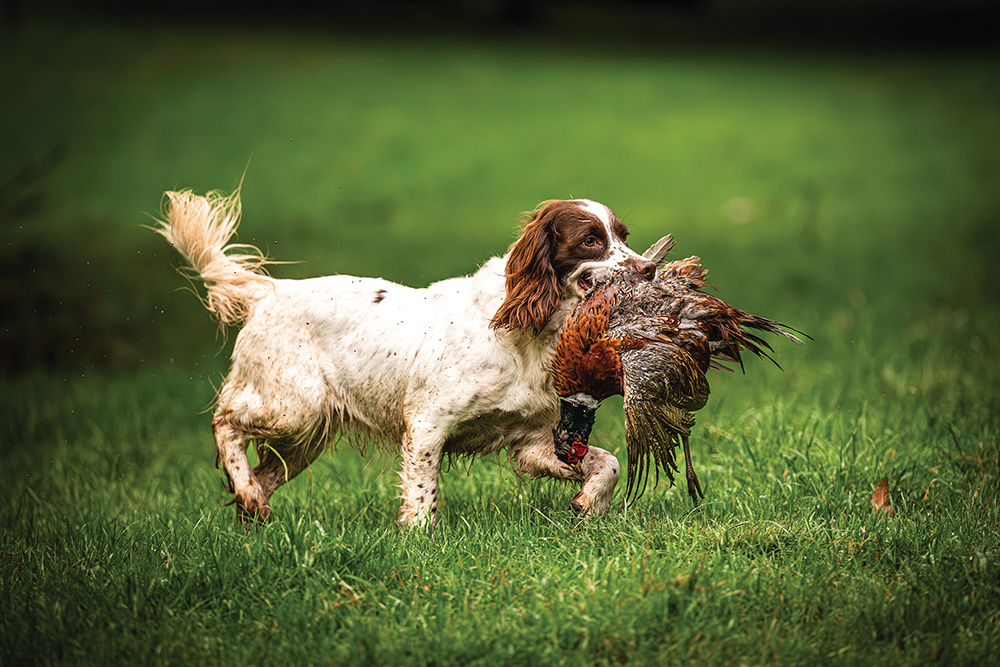
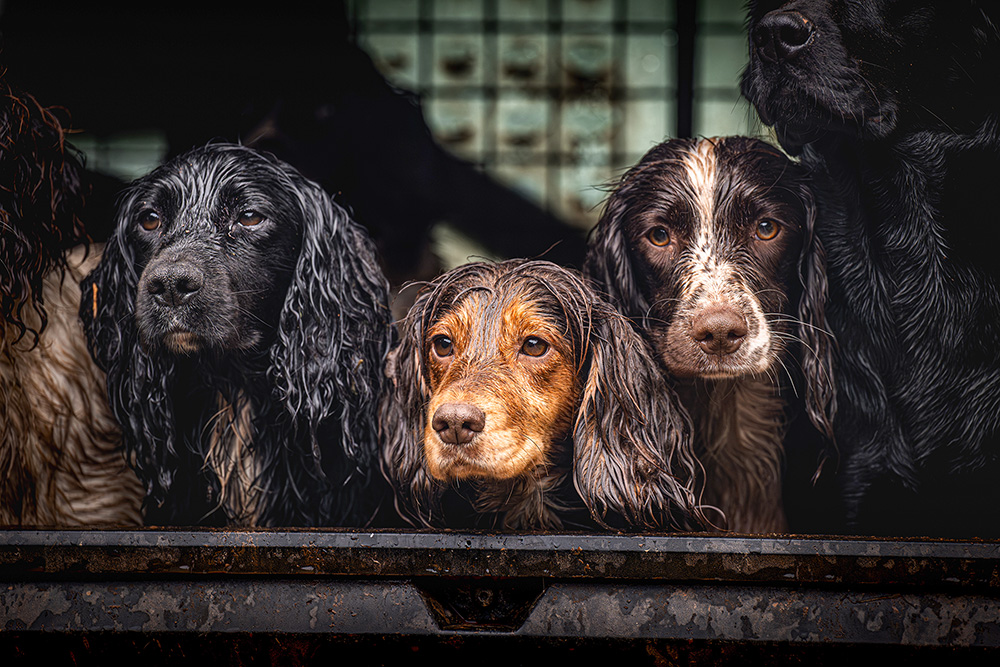
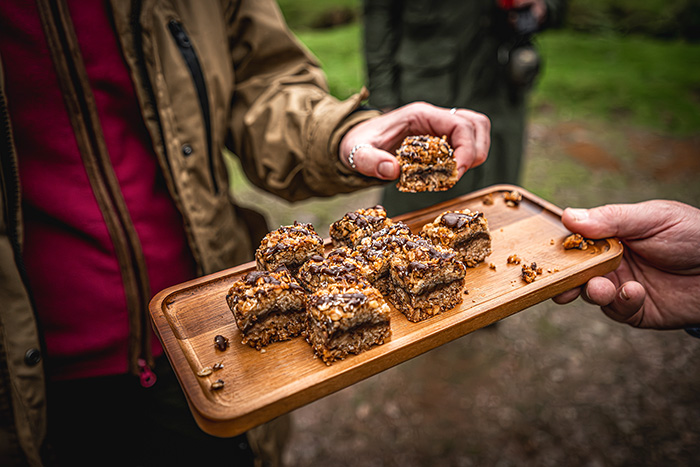
The “Birds Hill” drive is next, and the pheasants are different. This is not a shoot where game is indifferently kicked off a cliff in the hope that Guns might connect with one or two. This is properly driven game pushed so that the pheasants quater across the breeze and gain height as well as test each Gun's ability to read the lines of the birds. Unlike on the previous drive, these pheasants are sliding in a tailwind and prove tricky for most. An unnecessary complication for one guest is a gun malfunction mid-drive, but Simon Rood confirms that this is not terminal for the trip. “We have a close working relationship with a very good local gunsmith,” he says, “and they can fix things overnight, if necessary.” For now, we reach the conclusion over “elevenses” that the guest must shoot one gun and console himself with a good cigar.
“Emmett’s” is the drive before lunch, and the vehicles snake their way down the steep-sided slope. Peter checks in on a forecast app tracking a more-severe weather front crossing our area, and he outlines the choice to me: “We can lengthen this drive or shoot ‘Higher Down’ after lunch.” he seems to look at the wind, trying to read the weather gods and draw on his experience to make the call. It’s not straightforward. Rain here can be severe, vehicle-stranding downpours coming straight off the North Atlantic. “Come on, we‘ll do both drives,” he says and strides confidently down the hill to the pegs with the low-numbered guns.
A sumptuous lunch is followed by “Higher Down,” and the rain has cleared. Pete is still in the favor of the weather gods, and knowing that has not diminished his grin.
“Higher Down” is another of the classic pheasant drives at Combe Sydenham. Tall pines to our front and the Drake ponds behind give the landscape a feeling of timelessness. The pheasants are outstanding—arching the backs of the Guns and increasing the smiles evident on the walk back to the yard at the end of the drive. And it's only the first day of three.
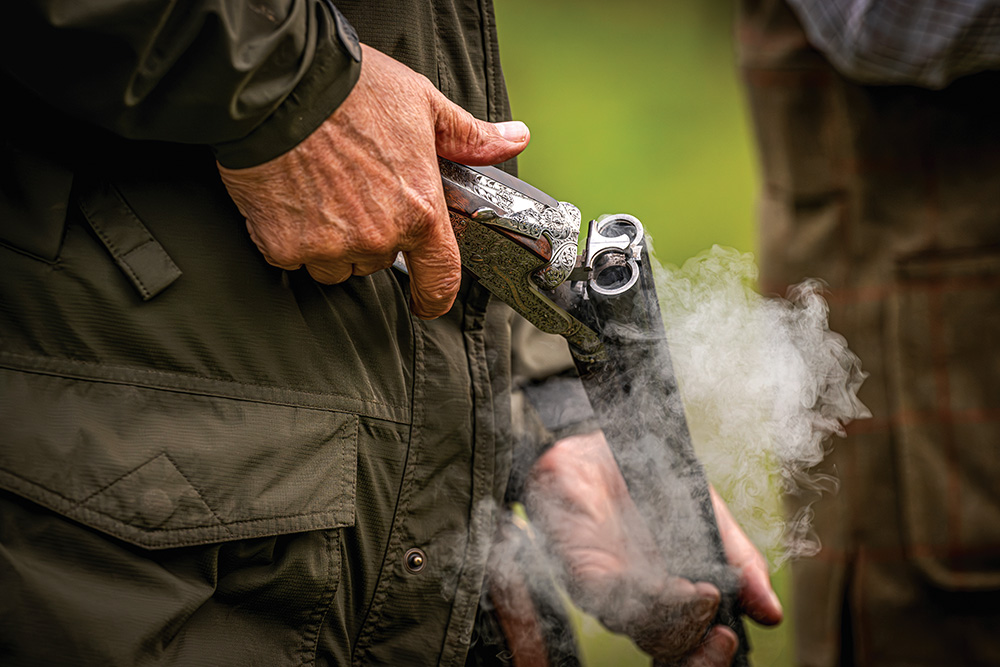
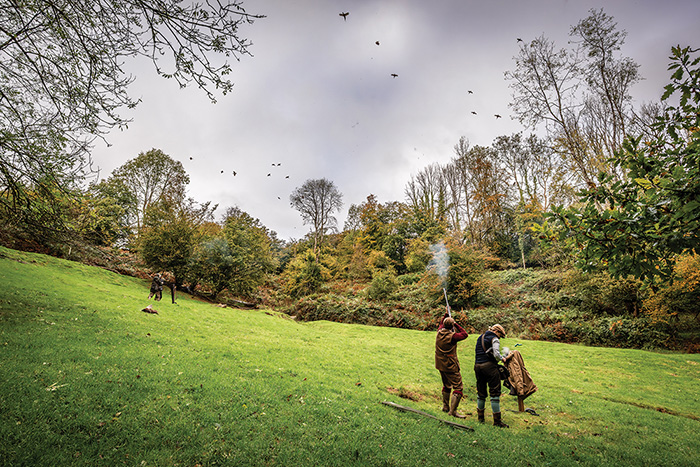
The following morning, well-dined, watered and rested, we are ready for the challenges of Challacombe. From the lodge to the shoot, we drive over the moor that is the essence of Exmoor. Storm clouds roll in the skies above ponies grazing as they have done for centuries, seemingly oblivious to the weather. It clears as we descend off the tops toward the reservoir that forms the heart of the shoot. The meeting place is in a beautiful farmhouse and is a temporary arrangement, part of the constant improvements to the shoots themselves and the hospitality around them. With pegs drawn, it’s onto the shoot through beech woods, bent and battered by winter winds yet undefeated.
“Dam” is the first drive, and it is an early sign of the test that will form the day. High partridge peel off the hill and over the reservoir, making for spectacular shooting and equally spectacular retrieves, as the birds that fall hit the water. Both dogs and guns are crucial parts of British game shooting, not only adding to the color of the day but also showing the heritage of this hunting tradition. It is not forgotten at any of the Loyton shoots.
Refreshments taken after the drive are served from a specially converted Land Rover designed for the purpose. A safari-style wash bowl is on the hood for Guns to clean up. It is, as is everything under the Loyton umbrella, perfectly done and endlessly flexible. “We can vary what we offer,” Simon confirms. “If you would like tomahawk steaks or wood-fired pizzas or even garlic-and-chili prawns served in the field, our chef can do that.” Far from distracting from a shoot day, this is part of savoring it. This is about flavor and experience in beautiful countryside with good companionship. Food simply tastes better in fresh air when you're in a good mood and surrounded by friends.
For the second drive we move away from the reservoir into a classic Exmoor farmed valley. For “Howard's Way” the sheep loan us their slped meadow as we fan out along the stream that cuts the valley bottom. The partridge are high, curling and fast. Spread across the entire line, it is another masterful display of the art of driving game—an art that is lost elsewhere in Britain but lives on in Exmoor. These are skills that have been honed over centuries and developed to another level to take advantage of the ground available in the West Country.
Then it’s back to the reservoir—the nucleus of the shoot—for the return drive: “Airy Hill.” The slope is steeper on this side of the water, and the foreground view is shortened because of it. It catches some of the Guns out, as the partridge are on them with little warning. High and fast, covey after covey flashes over the Guns, and the reason for the support rails behind each peg become clear. It‘s a long drop to the water if you over-balance, reaching for a bird in frustration with your second barrel.
The final drive is a further demonstration of partridge-driving skill. “Pixie’s Rock” might be named because the flagman (there to keep birds from leaking out the side) on top of the rock is so high above your peg that he appears that small. But he knows his job and a succession of partridge quarters across the Guns—some curling, some on the edge of range, all of them testing the shooters’ skills.
It's a spectacular finish to day two.
If the first two days were the lessons, then the third day at Haddeo is the exam.
With drives that range from “testing” to “off the chart,” Haddeo has the reputation as the finest pheasant shoot in Britain; and it can be something of an educational day even for the most experienced shots—and I am to shoot. The team has consulted with Angus and suggested that, to get a proper feel for the experience, I should move out of the observational line with the pickers-up and into the Gun line on the end or as back Gun.
The first drive is “Puzzlecombe,” and Head Keeper James Smith quietly suggests I position myself beside a stand of tall firs behind peg number six. In his calm, thoughtful manner, it’s as if he has just thought of the idea, but when I get there, my position is pegged with care. All the Haddeo pegs have the shoot logo on them as well as double coat hooks, so that your gear does not end up lying in the mud. It is this attention to detail that marks a Loyton shoot.
The pheasants are high and curling, and the team in front of me shoots well as I try to pick the best of the rest. It turns out that this is a gentle test compared with what is to follow.
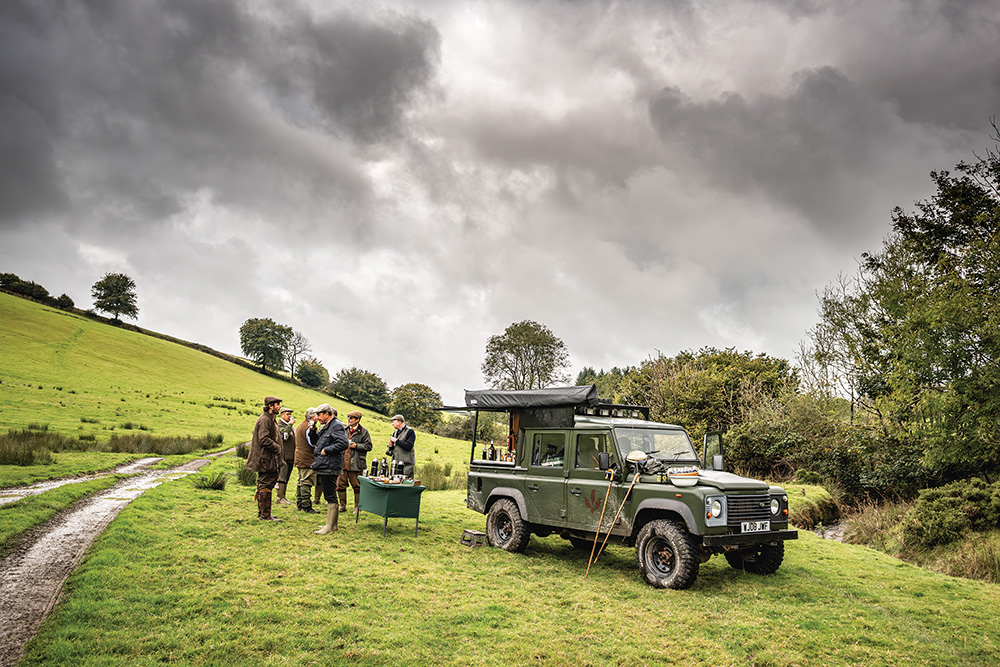
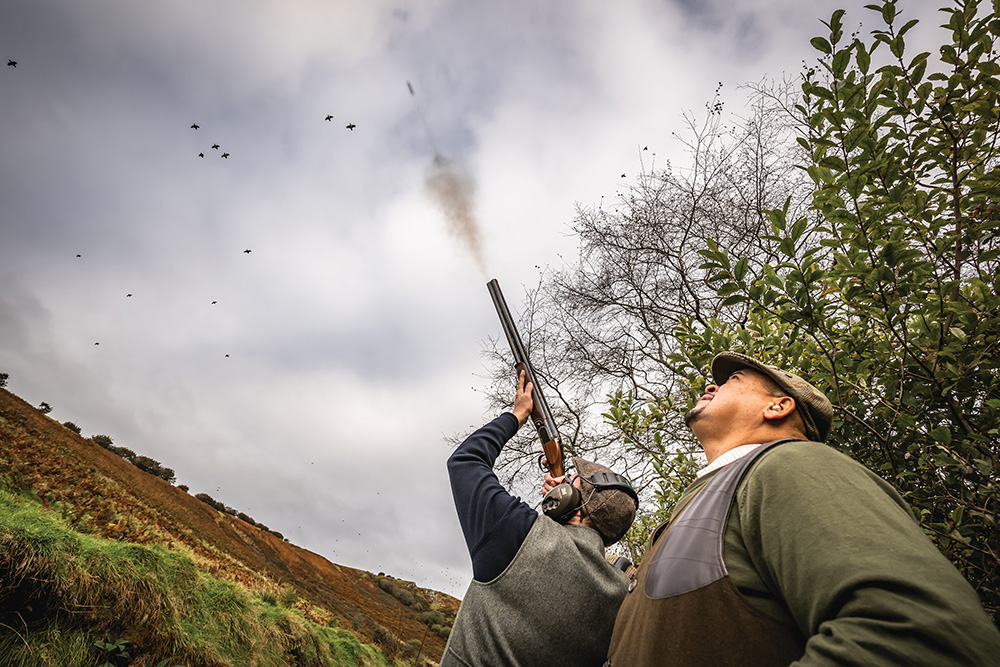
We allow ourselves a false sense of security over drinks and canapés after the first drive. Suitably refreshed, we move off to park in a grass paddock with a long bank of mature woodland to our front that is known as “Pixies.” Piers Vaux, one of the directors of Loyton Sporting, is hosting us this day, and he suggests that I stand on the end of the line to start, as the early birds will break down the woodland, and that I then move behind the middle of the line if I feel it’s necessary.
His experience is born out as the first pheasants head parallel to the line, looking for a safe exit from the drive. These are high birds, and even after the event I am trying to work out why I was completely undone. Looking back and in conversation with Simon Rood, I figure out that the birds were coming from a long way back and already had set their wings and begun to glide down from their extraordinary height by the time they got to the line. This is one of the most difficult game shots in the book and requires less lead than most perceive. A drive like “Pixies” is a humbling experience unless you can alter the failing plan and try something different.
The last two drives of the day are “Rock” and “General’s,” and both are in a wonderfully picturesque river valley. The sun cracks the clouds, and the landscape is lent a painterly brilliance as a mix of pheasants and partridge soars over the Guns waiting by the river. It is a memorable end to an extraordinary three days of shooting, and it has me down to my last cartridge.
The team at Loyton Sporting manages to combine a concierge feel and family atmosphere with those elements of subtle luxury that make a stay live long in the memory. Like all the best things in life, it‘s difficult to nail down just what makes such a trip remarkable; but we know it when we experience it, and we long for it again when it’s over. That irresistible draw marks out British game shooting as it should be.
For more information, contact Country Pursuits & Outfitters (cpoutfitters.com) or Loyton Sporting (loyton.com).
Read our Newsletter
Stay connected to the best of wingshooting & fine guns with additional free content, special offers and promotions.



